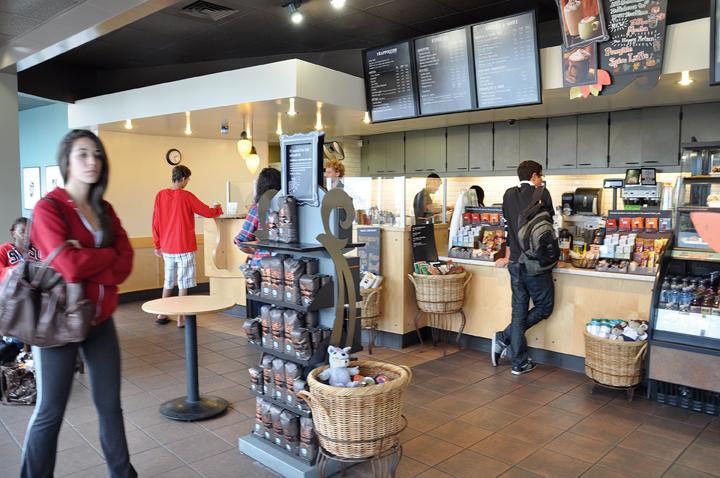I love the smell of Starbucks coffee—it’s rich, dark, lovely and idiosyncratic—but it isn’t until I bring that recycled cardboard cup to my lips and feel a terrible, caffeinated headache an hour later that I remember there is something wrong with it all. Do you ever wonder what this all means, what it entails? I do, though I know I’m a little quirkier, pensive and skeptical than most, perhaps just like an ordinary hipster—what a paradox.
But you, typical San Diego State student, might not ponder these things on your morning coffee trips. Tired, hair still wet from the shower, you shuffle through the line and when you are finally face-to-face with the barista, you mumble, “Hey, I’ll get a tall, hot caramel macchiato with room for cream,” and muster an earnest, yet sleepy smile.
You wait. When your cup slides on to the counter, you notice your name is spelled incorrectly and you laugh a little. You sit in a chair by the window and watch others hurry to class, feeling the warmth of the coffee in your hands. You take a sip, and for a moment you feel happy, awake and ready to start the day.
I spent quite a few mornings in at Starbucks last semester—the College Avenue location, usually. Two or three times a week I would sit quietly, looking pretentious with my tortoise-rimmed reading glasses and red lipstick, and I’d study people—their patterns and interactions—then write poetry or journal entries of the things I noticed. It slowly became a kind of artistic ethnography.
During the time I spent there, I came to some interesting conclusions, which may or may not be true. I judged Starbucks to be quite a microcosmic atmosphere—an eclectic spectrum of all social classes and lifestyles. Here, you’ll find the professor, the entrepreneur, the mother and her two children, the elderly man with a newspaper, the carpenter, the nomad, the student. It’s that safe, comforting place where people congregate around the shared love of coffee to read, discuss business or spend quality time with an old friend.
Starbucks, the emblem of the American coffee empire and “coffee culture,” represents the evolution of the contemporary social paradigm—I might even call it a quasi religion. Starbucks embraces America. Here, all ideologies coexist, multiculturalism flourishes and materialism is encouraged. This all happens with the guise of a delicious, bittersweet drink.
In this “quasi religion” you have the freedom to be yourself without pretenses, or with all the pretenses you desire. You, your coffee and your free thoughts—and whoever else might be there. And I’ve seen, time and time again, that moment when you allowed yourself to indulge in that first sip—it’s sacred, ritualistic, entirely subjective. It is all yours … but not really.
Consider the beautiful, ethereal woman on the green logo. She is a siren, seductive and mysterious. The purpose of a siren is to sing sailors to their deaths by drawing their ships toward rocks. But you likely didn’t know this when you last saw the sweet, wry smile and star-crowned head of this wily siren. And when you walk through her door, she says, “I’ll give you peace and the vitality you need to get through the day, in exchange for your money.” She—Starbucks—is intoxicating and charismatic. She preaches the need to consume her nectar, just to live. So drink coffee and prosper.
But, if you decide to disengage from this culture, there really is no evading it in American society. Even at this university, Starbucks is ubiquitous. There are three on campus: College Avenue, East and West Commons. Even if you hate coffee, you go. You meet people, you study and talk—you can’t help but buy your favorite drink.
This is only some food for thought—a philosophical snack, if you will. I don’t expect you to stop going, because, withal, it is not an inherent evil. It’s just another thing you don’t require to live well, or live fully. Just something to consider: An apple in the morning is a far better for your mind and body. And I doubt you’ll ever look at Starbucks the same ever again.







